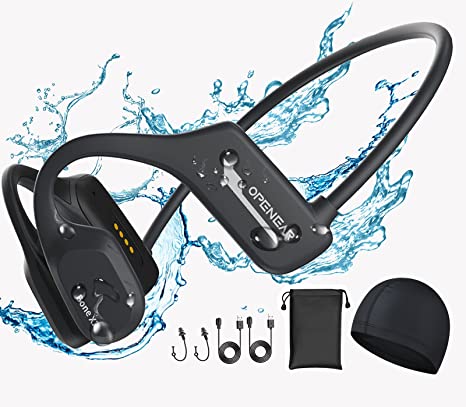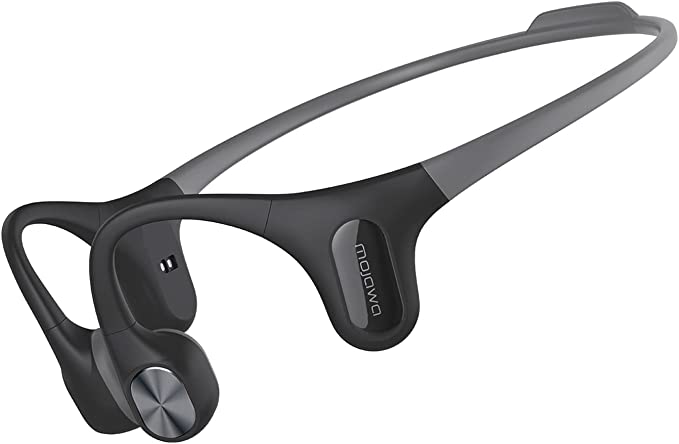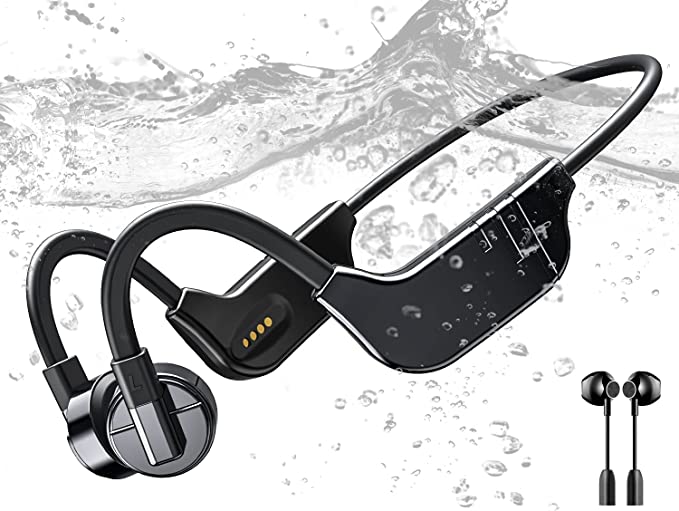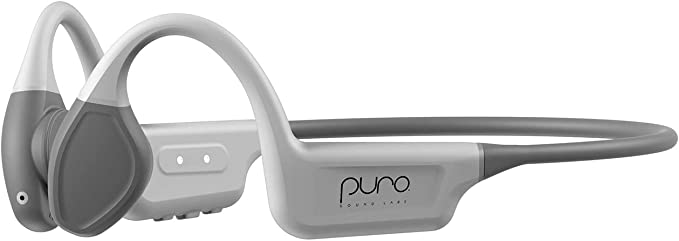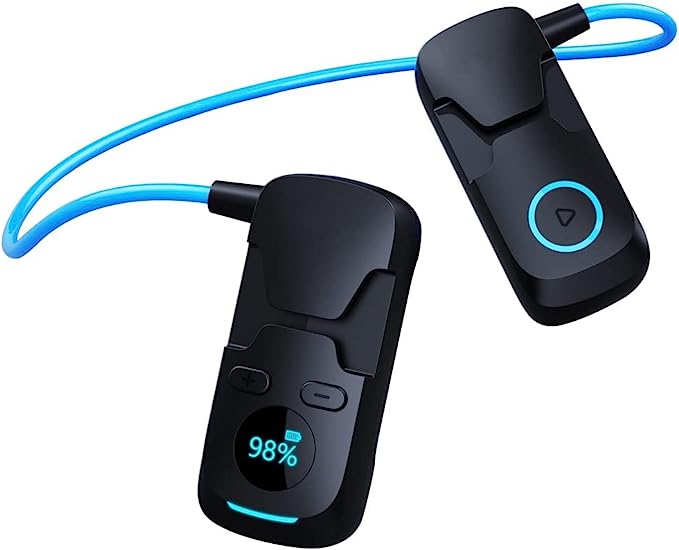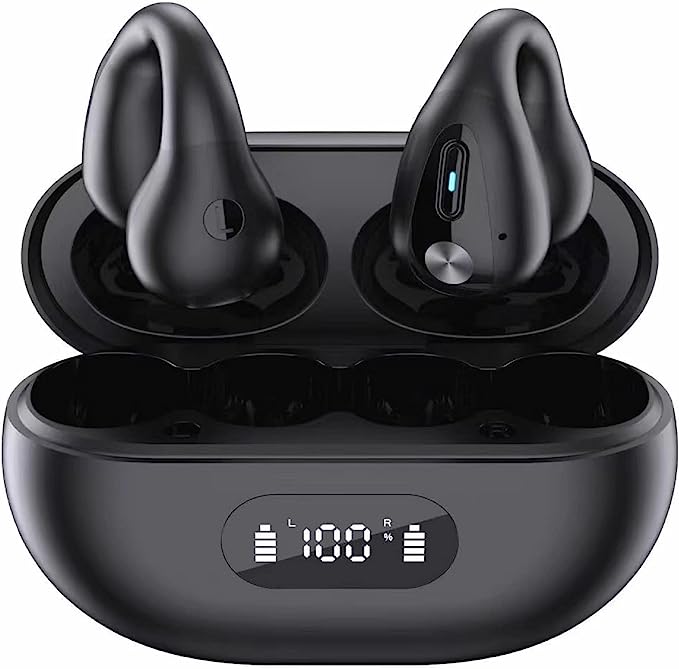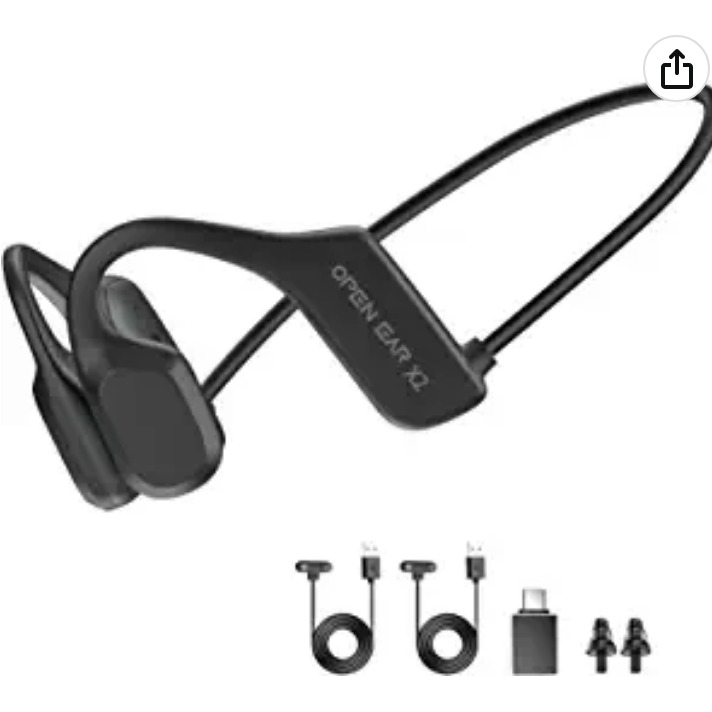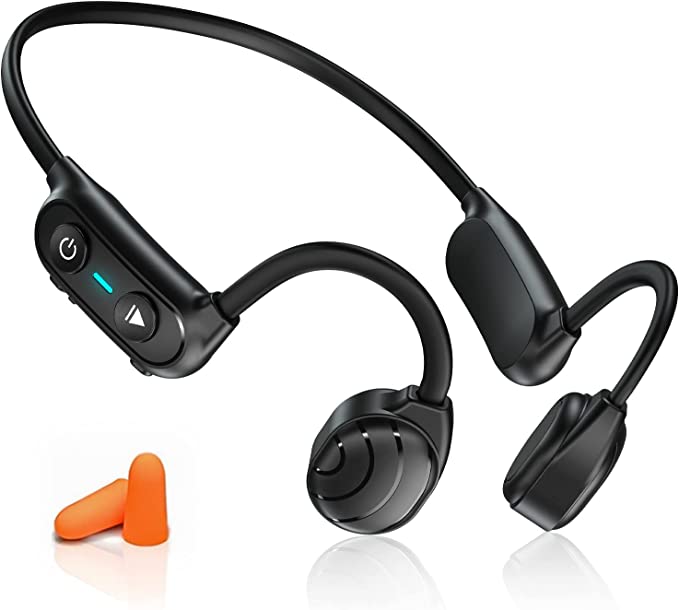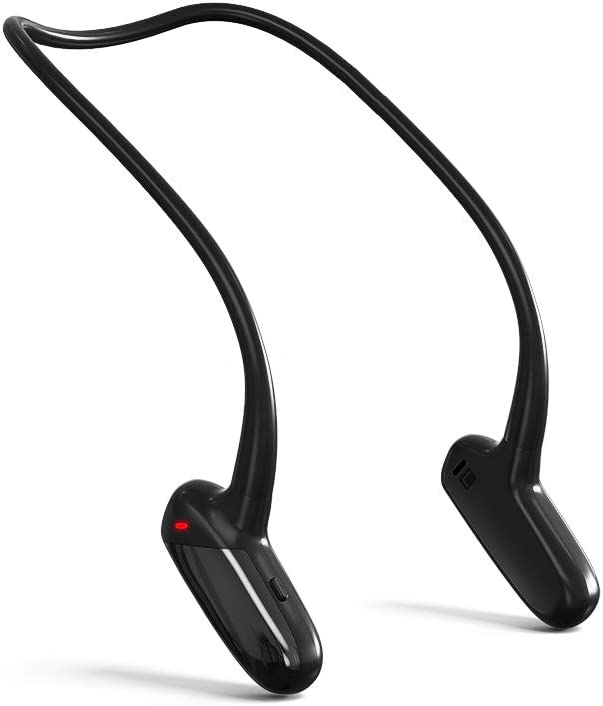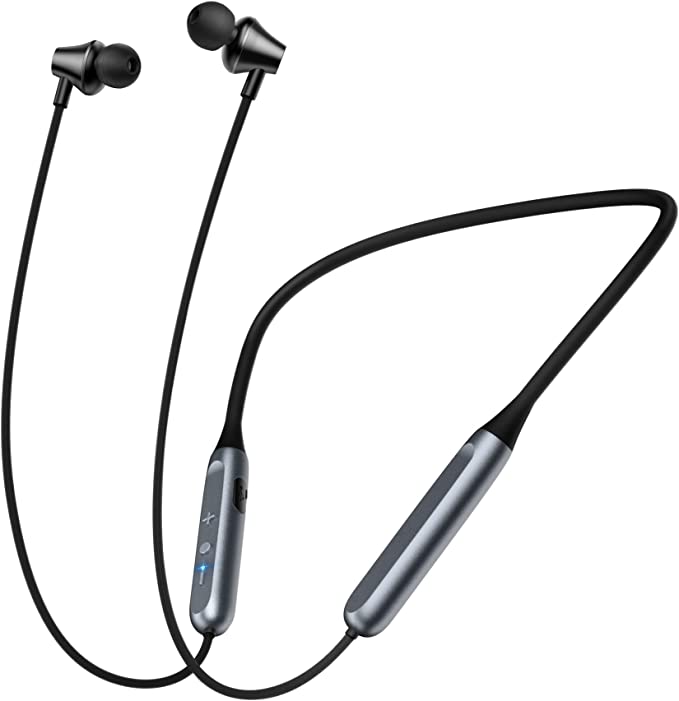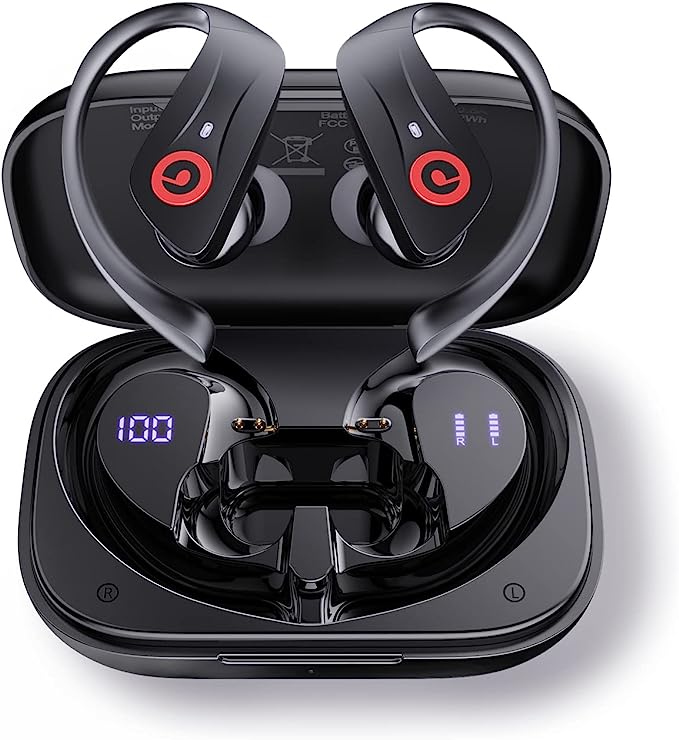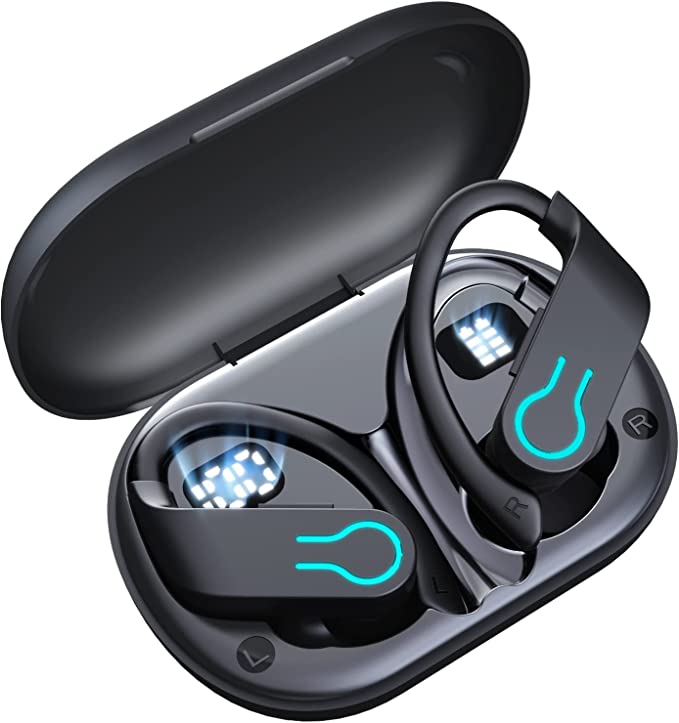JekaDabe OPENEAR Sextet Bone Conduction Headphones: The Safest and Smartest Bone Conduction Headphones for Outdoor Activities
Update on June 24, 2025, 2:33 p.m.
Prologue: The Unheard Symphony – Rethinking How We Listen
In our hyper-connected, audio-saturated world, a fundamental tension simmers beneath the surface of our daily lives: the deep-seated desire for our personal soundscapes – music that motivates, podcasts that enlighten, calls that connect – versus the non-negotiable, primal need for awareness of the world unfolding around us. Picture the urban cyclist deftly navigating a symphony of traffic, the trail runner whose rhythm is set as much by footfall as by playlist, or the parent multitasking through a chorus of household demands. All share a common, often unspoken, yearning: a way to bridge this auditory divide.
What if the familiar pathways of sound into our minds – the air itself carrying whispers and roars to our eardrums – were not the only routes? Introduce bone conduction, an auditory principle that feels at once ancient and startlingly futuristic. It’s a concept with almost mythical associations, echoing back to figures like the prodigious Ludwig van Beethoven. Legend holds that in his profound deafness, he would bite into a rod connected to his piano, the vibrations traveling through his jawbone, allowing him to “feel” the music, to perceive the magnificent structures of sound he could no longer hear in the conventional sense. This wasn’t magic; it was a raw, visceral demonstration of sound’s ability to traverse solid matter, a whisper of the science we now hold in our hands.
This exploration, therefore, isn’t merely about another pair of headphones. It’s an invitation to delve into how a device like the JekaDabe OPENEAR Sextet Bone Conduction Headphones harnesses this enduring principle with cutting-edge ingenuity. It’s about understanding how this technology might not just change how we listen, but potentially redefine our very relationship with sound, with safety, and with the rich tapestry of the environment we inhabit.

Chapter 1: The Anatomy of an Echo – How Bone Conduction Rewrites the Rules of Hearing
To truly appreciate the innovation at play, we must first briefly revisit how we typically perceive sound. Conventionally, sound is an airborne traveler. Waves of pressure ripple through the air, funnelled by the intricate architecture of our outer ear down the ear canal. There, they meet the tympanic membrane – the eardrum – causing it to vibrate. These vibrations are then mechanically amplified and transmitted by a delicate chain of three tiny bones (the ossicles: malleus, incus, and stapes) in the middle ear, finally reaching the cochlea. This spiral-shaped marvel, nestled deep within the inner ear, is where the mechanical energy is transduced into electrical impulses, the language of our nervous system, which our brain then interprets as the myriad sounds of our existence.
Now, imagine sound taking a more direct, almost “VIP backstage pass,” to this inner sanctum. This is the essence of bone conduction. Devices like the JekaDabe OPENEAR Sextet feature transducers – miniature marvels of engineering – that don’t go into or over your ears. Instead, they rest gently on your cheekbones (specifically, the zygomatic arches, just in front of the ears). When you play audio, these transducers convert the electrical signals into subtle, precisely controlled mechanical vibrations. These vibrations then embark on a fascinating journey, not through air, but through the solid structure of your skull. Your bones themselves become the conduit, efficiently transmitting these vibrations directly to the cochlea, effectively bypassing the outer and middle ear.
The most profound implication of this alternative auditory pathway is the Open-Ear Revelation. Your ear canals remain completely unobstructed, unburdened. This isn’t merely a design aesthetic; it’s a fundamental shift in the listening paradigm. It means that while you’re immersed in your chosen audio, your ears are still fully receptive to the ambient sounds of your surroundings.
Why does this matter so profoundly? It’s about weaving a symphony of awareness into our daily lives. For the runner on a city street, it’s the ability to register the low hum of an approaching electric vehicle or the chime of a bicycle bell. For the cyclist sharing the road, it’s retaining the crucial auditory cues of traffic flow and a distant siren. For the office worker, it’s being able to hear a colleague’s question without having to constantly remove an earbud. In essence, open ears mean a preserved, often critical, lifeline to the auditory landscape around us.
Beyond safety, this open-ear approach heralds a new era of comfort. The common discomforts associated with traditional earbuds – that feeling of pressure, itchiness, or the occluded, “plugged-up” sensation after prolonged use – are elegantly sidestepped. For individuals who wear glasses or helmets, the JekaDabe OPENEAR Sextet is designed for seamless integration, eliminating the awkward interference that other headphone types can cause. For everyone, it translates to the potential for hours upon hours of fatigue-free listening, where the headphones feel less like an intrusive gadget and more like an extension of your senses. It’s about reconnecting with reality, offering a way to engage with your personal audio without a complete sensory severance from the immediate, tangible world.

Chapter 2: The Alchemist’s Touch – Crafting the JekaDabe OPENEAR Sextet
The JekaDabe OPENEAR Sextet is more than just a clever application of bone conduction; it’s a carefully considered piece of engineering where materials science, wireless technology, and ergonomic design converge.
At the heart of its physical form lies Titanium’s Embrace. Titanium alloy isn’t an arbitrary choice for the headphone frame; it’s a material scientist’s go-to for applications demanding a trifecta of lightness, strength, and resilience. The OPENEAR Sextet tips the scales at approximately one ounce (a mere 28 grams – akin to the weight of a few stacked coins), making its presence on your head almost imperceptible during extended wear. Yet, this featherlight quality belies an impressive structural integrity. The product page highlights its “360° bendable” nature, signifying a remarkable flexibility that allows the frame to conform ergonomically to a wide array of head shapes and sizes. This adaptability is key to its secure, comfortable fit, ensuring it stays put even during vigorous activities like running or cycling. Furthermore, titanium alloys boast excellent corrosion resistance, a vital attribute when contending with the sweat والمطر that an active lifestyle often entails. While direct skin contact areas are typically coated or use medical-grade silicone, the underlying material’s inherent properties contribute to overall durability and a premium feel.
The invisible current that breathes life into these headphones is Bluetooth 5.3. This latest iteration of the ubiquitous wireless standard represents a significant step forward from its predecessors. It’s engineered for greater efficiency, meaning it’s kinder to the battery, allowing for those extended playback times. Connection stability is another hallmark; Bluetooth 5.3 is designed to provide a more robust and interference-resistant link, minimizing frustrating audio dropouts, even in environments насыщенные радиочастотными сигналами. For users sensitive to the slight lag that can sometimes occur between video and audio, or for gamers where split-second audio cues are critical, the advancements in Bluetooth 5.3 aim to deliver lower latency, resulting in a more synchronized and immersive experience. The JekaDabe OPENEAR Sextet leverages this advanced technology to ensure that your audio stream is not just wireless, but also consistently clear and unfaltering.
Answering the call of an active, often unpredictable life, the OPENEAR Sextet is Shielded by IPX5. The “IP” in this rating stands for Ingress Protection, a standardized system IEC 60529 uses to classify the degree of protection provided by enclosures of electrical equipment. The “X” in IPX5 indicates that the device has not been specifically tested or rated for dust ingress. However, the “5” is crucial: it signifies that the headphones are protected against low-pressure water jets from any direction. In practical, everyday terms, this means you can engage in sweat-drenched workouts or find yourself caught in a sudden rain shower without undue concern for the device’s well-being. It is important, however, to heed the manufacturer’s clarification: this level of water resistance does not make the headphones suitable for submersion, so swimming with them is not recommended.
Finally, powering this entire experience is a thoughtful combination of endurance and elegance in its battery and charging system, what we might call The Pulse of Power. The promise of 6-10 hours of continuous playback (at 80% volume) means the OPENEAR Sextet is designed to be a steadfast companion, whether you’re powering through a long workday, an extended training session, or an epic cross-country road trip. An impressive standby time of up to 300 hours ensures it’s ready to go when you are, even if it’s been a few days since its last use. When it is time to refuel, the magnetic charging system offers a touch of practical sophistication. There’s no fumbling with tiny ports in the dark; the magnetic connector snaps into place حكومة and securely, minimizing wear and tear on the charging interface and simply making the process more convenient. A full charge, bringing it back to its energetic best, is accomplished in a swift 2 hours.

Chapter 3: The Nuance of Sound, The Clarity of Voice – Balancing Audio Fidelity with Openness
The auditory experience delivered by bone conduction is, by its very nature, distinct from that of traditional headphones that seal the ear canal or cover the entire ear. It’s a unique Bone-Borne Soundscape, and understanding its characteristics is key to appreciating what the JekaDabe OPENEAR Sextet offers.
When it comes to sound fidelity, bone conduction typically excels in rendering mid and high frequencies with commendable clarity. Vocals in music, the spoken word in podcasts, or the nuances of a phone conversation often come through crisply. However, the deep, resonant bass frequencies that many listeners associate with high-end, ear-enclosing headphones are perceived differently. With bone conduction, powerful bass is often felt as much as it is heard – a subtle, tactile vibration against the cheekbones rather than a booming pressure wave in the ear canal. The JekaDabe OPENEAR Sextet’s mention of an “exclusive bass vocal vibrator” suggests a specific engineering focus aimed at enriching this lower-end tactile sensation, attempting to add a layer of perceived fullness and impact to the bass register. It’s an acknowledgment of bone conduction’s inherent characteristics and an effort to optimize the experience within those parameters.
An interesting inclusion in the JekaDabe OPENEAR Sextet’s package is a pair of sponge earplugs. At first glance, this might seem counterintuitive to the core “open-ear” philosophy. However, their presence offers users an optional mode of listening. By gently blocking the ear canals with these earplugs, you reduce the amount of ambient sound entering via the traditional air conduction pathway. This, in turn, can make the bone-conducted sound feel more direct, more immersive, and “fuller,” particularly for a more focused listening session in a relatively safe and quiet environment. It’s a clever way to provide versatility, allowing the user to modulate their level of environmental awareness based on their immediate needs. The true magic of the JekaDabe OPENEAR Sextet, for many, will lie in experiencing their chosen audio as an elegant overlay, a personal soundtrack that complements, rather than replaces, the soundscape of the world.
Beyond personal audio enjoyment, clear communication is a vital function. The JekaDabe OPENEAR Sextet features what is described as an “Active Noise-Canceling MIC,” and it’s crucial to deconstruct this term accurately. This is not the type of Active Noise Cancellation (ANC) that creates a bubble of silence around you, eliminating the noise of a bustling café or the drone of an airplane engine while you’re listening to music. Instead, this refers to a sophisticated microphone system engineered to enhance the clarity of your voice when you are speaking on a call. It actively works to identify and suppress ambient noise picked up by the microphone – be it the gust of wind during a run, the clatter of keyboards in an open office, or the general hum of street traffic – so that the person on the other end of the line can hear you more distinctly. It’s about ensuring your message gets through, even when your surroundings are less than serene.
Controlling these functions is made effortless through Simplicity at Your Fingertips. In situations where your attention is divided, such as during a vigorous workout or while navigating a busy street, fumbling with tiny, overly sensitive touch controls can be frustrating and even hazardous. The JekaDabe OPENEAR Sextet opts for an intuitive three-button physical interface. These tactile buttons provide direct and reliable control over essential functions like music playback (play/pause, skip tracks), volume adjustment, and managing incoming or outgoing calls. This design philosophy prioritizes ease of use and dependability when you need it most.

Chapter 4: From Hearing Aids to Headsets – The Enduring Journey of an Auditory Ally
Bone conduction technology, while feeling refreshingly modern in devices like the JekaDabe OPENEAR Sextet, is not a fleeting novelty. It possesses A Technology with Deep Roots, its principles having been understood and explored for well over a century. Its earliest and perhaps most impactful applications lie in the medical field, particularly in the development of specialized hearing aids. Devices like Bone Anchored Hearing Aids (BAHAs) have provided a profound lifeline to individuals with certain types of conductive hearing loss (where sound cannot efficiently travel through the outer or middle ear) or single-sided deafness, enabling them to perceive sound by directly stimulating the healthy cochlea via bone vibration.
Beyond medical applications, bone conduction has carved out critical niches in professional and specialized communication. In environments характеризующиеся высоким уровнем шума, such as military operations or industrial settings, or where ear canals must remain open for safety or to accommodate other gear (like for firefighters or divers), bone conduction headsets have proven invaluable for ensuring clear and reliable communication. They allow personnel to receive vital instructions while maintaining full auditory awareness of their often-hazardous surroundings.
The journey from these specialized, often mission-critical applications to the consumer electronics space represents a significant evolution. The Consumer Evolution has seen this robust technology refined, miniaturized, made more comfortable, and, crucially, more affordable. The JekaDabe OPENEAR Sextet stands as a contemporary testament to this progression, embodying how sophisticated engineering can adapt a fundamental auditory principle for everyday enrichment, safety, and convenience. It democratizes a technology once reserved for specific needs, bringing its unique benefits to a broader audience.
Looking towards The Horizon of Hearing, the journey of bone conduction technology is far from its conclusion. We can anticipate further refinements in transducer efficiency, leading to even richer sound fidelity and potentially more nuanced bass reproduction. Miniaturization will likely continue, making devices even more discreet and seamlessly integrated. We might see more sophisticated AI-driven audio processing tailored to individual hearing profiles or environmental contexts. Imagine bone conduction integrated even more seamlessly with augmented reality glasses, providing discreet auditory cues without obstructing vision or hearing. Or perhaps, enhanced bio-feedback capabilities, where the headphones not only deliver sound but also subtly monitor physiological data. The potential for innovation remains vast, and bone conduction is poised to play an increasingly significant role in shaping how we interact with sound and technology in the years to come.
Epilogue: JekaDabe OPENEAR Sextet – An Invitation to Listen Anew
Ultimately, the JekaDabe OPENEAR Sextet, and the fascinating bone conduction technology it embodies, is more than just a new way to consume audio. It extends an Invitation to Listen Anew. It encourages us to cultivate a more conscious, more connected, and, in many everyday scenarios, a significantly safer relationship with the world of sound that envelops us. It represents the freedom to move through our lives, to explore our passions, to engage with our work and our world, without sacrificing the personal soundtrack that enriches our experiences, and critically, without severing our awareness of the vibrant, sometimes unpredictable, symphony of life that plays out around us.
In an age often characterized by sensory overload and digital cocoons, perhaps the truest auditory luxury is not merely a louder, more isolating sound, but a smarter, more harmonious way of experiencing all the sounds that constitute our daily existence. The JekaDabe OPENEAR Sextet offers one compelling, thoughtfully engineered path toward achieving that very harmony, inviting us to rediscover the richness of listening with our ears, and indeed, with our very bones.
